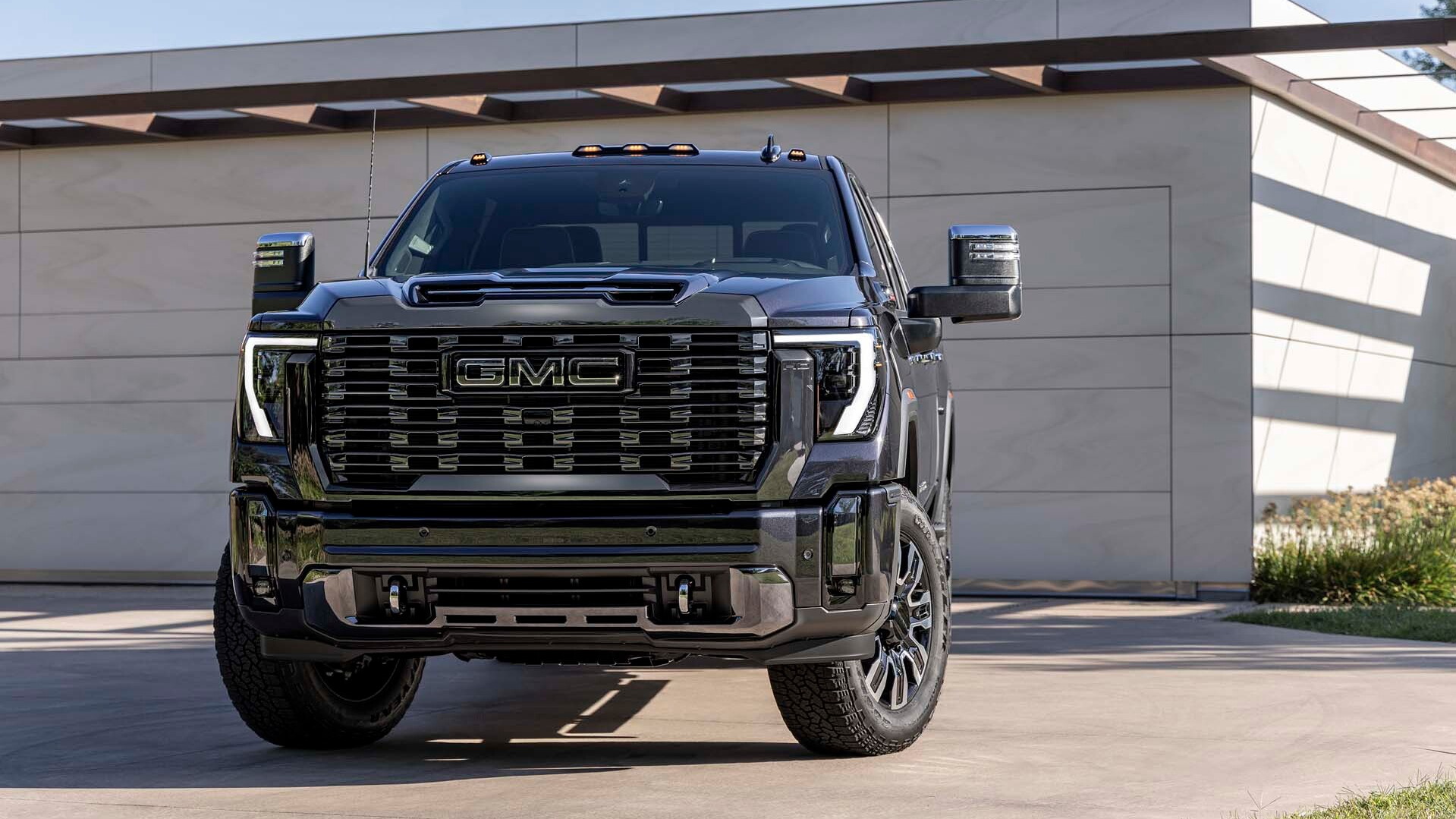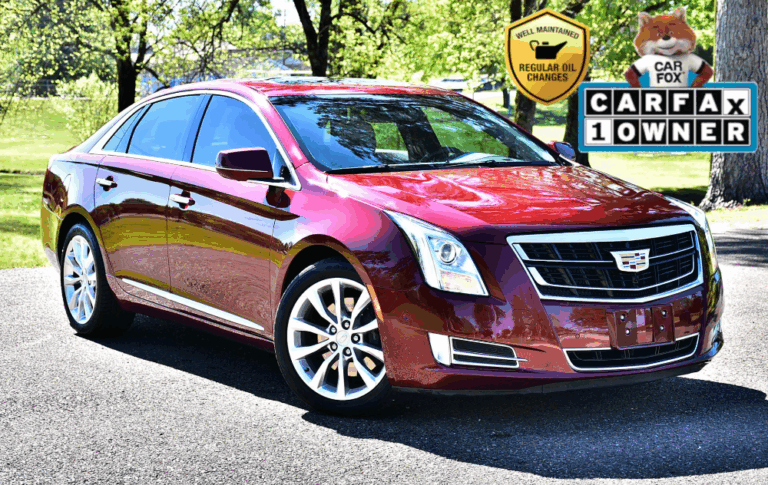GMC Box Truck Exterior Dimensions And Length: A Comprehensive Guide for Businesses
GMC Box Truck Exterior Dimensions And Length: A Comprehensive Guide for Businesses cars.truckstrend.com
In the bustling world of logistics, deliveries, and specialized services, the box truck stands as a quintessential workhorse. For businesses relying on efficient transportation, understanding the precise exterior dimensions and length of a GMC box truck isn’t merely an academic exercise; it’s a critical strategic decision that impacts everything from operational efficiency and route planning to parking availability and regulatory compliance. This comprehensive guide will delve into the intricacies of GMC box truck dimensions, offering practical insights to help you make informed choices for your fleet.
Understanding the Basics: What Defines a Box Truck’s Dimensions?
GMC Box Truck Exterior Dimensions And Length: A Comprehensive Guide for Businesses
A GMC box truck, often referred to as a "cube van" or "straight truck," typically consists of two main components: a chassis cab (the front part with the engine, cab, and frame) and a separate, enclosed box body mounted on the rear. When we talk about "exterior dimensions and length," we are referring to the measurements of the entire assembled vehicle, from bumper to bumper, side to side, and ground to the highest point.
Key measurements include:
- Overall Length: The total distance from the front-most point of the truck (e.g., bumper) to the rear-most point (e.g., end of the box or a liftgate if extended). This is perhaps the most crucial dimension for maneuverability and parking.
- Overall Width: The total distance from the widest point on one side of the truck to the widest point on the other. This usually includes the mirrors, which are often the widest part.
- Overall Height: The total distance from the ground to the highest point of the truck, typically the top of the box body, but it can also include features like roof-mounted air conditioning units or aerodynamic fairings.
These measurements are not static across all GMC box trucks. They vary significantly based on the specific GMC chassis model used (e.g., Savana Cutaway, Sierra Chassis Cab series), the length and height of the box body chosen by the upfitter, and any additional features like liftgates or custom modifications.

Common GMC Box Truck Models and Their Typical Dimensions
GMC offers a robust lineup of chassis that serve as the foundation for various box truck configurations. The most common platforms include:
- GMC Savana Cutaway: Often used for lighter-duty box trucks, typically ranging from 10-foot to 16-foot box lengths. These are popular for last-mile delivery, small businesses, and rental fleets due to their relatively compact size and ease of driving.
- GMC Sierra Chassis Cab (3500HD, 4500HD, 5500HD, 6500HD): These heavy-duty chassis provide greater payload capacity and are capable of accommodating larger box bodies, commonly ranging from 14-foot to 26-foot lengths. They are ideal for more demanding applications, larger cargo volumes, and longer hauls.
While exact dimensions will vary, here are some typical ranges for overall exterior dimensions based on common box lengths:
- 10-Foot Box Truck (Savana Cutaway):
- Overall Length: Approx. 20-22 feet
- Overall Width (with mirrors): Approx. 8 feet (96 inches) to 8.5 feet (102 inches)
- Overall Height: Approx. 10-11 feet
- 12-Foot Box Truck (Savana Cutaway):
- Overall Length: Approx. 22-24 feet
- Overall Width (with mirrors): Approx. 8-8.5 feet
- Overall Height: Approx. 10.5-11.5 feet
- 14-Foot Box Truck (Savana Cutaway, Sierra 3500HD):
- Overall Length: Approx. 24-26 feet
- Overall Width (with mirrors): Approx. 8-8.5 feet
- Overall Height: Approx. 11-12 feet
- 16-Foot Box Truck (Savana 4500 Cutaway, Sierra 4500HD):
- Overall Length: Approx. 26-28 feet
- Overall Width (with mirrors): Approx. 8-8.5 feet
- Overall Height: Approx. 11.5-12.5 feet
- 20-Foot Box Truck (Sierra 5500HD/6500HD):
- Overall Length: Approx. 30-32 feet
- Overall Width (with mirrors): Approx. 8.5-9 feet (102 inches is common for larger trucks)
- Overall Height: Approx. 12-13.5 feet
- 24-Foot Box Truck (Sierra 6500HD):
- Overall Length: Approx. 34-36 feet
- Overall Width (with mirrors): Approx. 8.5-9 feet
- Overall Height: Approx. 12.5-13.5 feet
- 26-Foot Box Truck (Sierra 6500HD):
- Overall Length: Approx. 36-38 feet
- Overall Width (with mirrors): Approx. 8.5-9 feet
- Overall Height: Approx. 12.5-13.5 feet
It’s crucial to remember that the box length is not the overall length. The chassis cab, engine, and front bumper add significant length. A 16-foot box, for example, will result in an overall truck length closer to 26-28 feet.
The Nuances of Exterior Length: Why It Matters Beyond Cargo
The overall length of a GMC box truck profoundly impacts its usability and operational costs:
- Maneuverability in Urban Environments: Shorter trucks (10-14 feet box) are far easier to navigate through city streets, tight alleys, and crowded loading docks. Longer trucks require wider turning radii, making sharp turns and U-turns challenging or impossible in confined spaces.
- Parking Limitations: Finding suitable parking for a long box truck, especially in urban areas, can be a significant challenge. Many parking lots, street parking spots, and even some loading zones are designed for smaller vehicles. Exceeding marked lines can lead to fines or impede traffic flow.
- Bridge and Tunnel Clearances: While height is the primary concern for overhead clearances, the truck’s length also indirectly affects the driver’s ability to position the vehicle correctly for safe passage, especially on curved approaches.
- Regulatory Compliance: State and federal regulations impose limits on vehicle length. For instance, many states have a 40-foot maximum length for single-unit trucks without special permits. While most GMC box trucks will fall within this, it’s a critical consideration for the longest configurations. Exceeding these limits can result in hefty fines and operational delays.
- Fuel Efficiency: Generally, longer and heavier trucks consume more fuel. The added weight of a larger box and the increased aerodynamic drag contribute to higher operating costs. Right-sizing your truck to your actual cargo needs can lead to significant fuel savings.
Exterior Width and Height: Crucial for Access and Safety
Beyond length, a box truck’s width and height present their own set of considerations:
- Width for Narrow Streets and Loading Bay Clearances: An overall width of 8.5 feet (102 inches) is common for larger box trucks, which can be challenging on narrow residential streets or in older industrial areas with tight loading bays. Drivers must be constantly aware of side clearances to avoid scrapes, dents, or more serious accidents. Remember that mirrors are often the widest point and are susceptible to damage.
- Height for Overhead Obstacles: This is arguably the most critical dimension for safety. Bridges, tunnels, parking garage entrances, drive-thru lanes, low-hanging tree branches, and even overhead power lines pose significant risks. A typical 12-13.5 foot height means many standard passenger vehicle clearances (e.g., 8-9 feet for parking garages) are impassable. Drivers must always know their truck’s exact height and be vigilant for clearance signs. Striking an overhead object can cause severe damage, injury, or even structural collapse.
- Impact on Visibility: While not a direct dimension, the overall size of the box body can create significant blind spots. Wide mirrors and possibly camera systems become essential for safe operation.
Factors Influencing GMC Box Truck Dimensions
Several elements beyond just the "box length" contribute to the final exterior dimensions:
- Chassis Model: As discussed, the specific GMC chassis (Savana vs. Sierra HD series) dictates the wheelbase and overall frame length, which in turn determines the maximum practical box size.
- Box Manufacturer and Type: Different upfitters may offer slightly varying external dimensions for the same nominal box length. Dry freight boxes are standard, but refrigerated (reefer) units often have thicker walls (adding to exterior width) and a refrigeration unit (adding to height/length).
- Liftgate Addition: Most box trucks are equipped with a liftgate at the rear. When stowed, a standard tuck-under liftgate might not add significantly to overall length. However, a full-closure or rail-style liftgate, especially when extended, can add several feet to the rear overhang, which is critical for maneuvering.
- Aerodynamic Fairings: Many newer box trucks feature aerodynamic fairings or "boat tails" at the rear to improve fuel efficiency. These can add a small amount to the overall length.
- Wheelbase: The distance between the front and rear axles. A longer wheelbase generally supports a longer box but reduces maneuverability (larger turning radius).
Practical Advice for Choosing the Right Dimensions
Selecting the optimal GMC box truck dimensions requires careful consideration of your specific operational needs:
- Assess Your Operational Needs: What type of cargo will you primarily transport? How much volume and weight? What are your typical delivery routes (urban, suburban, highway)? What are the common loading/unloading environments (loading docks, residential driveways, construction sites)?
- Measure Your Common Routes and Facilities: Don’t guess. Physically measure the height of any low bridges, tunnels, or garage entrances on your regular routes. Check the width of alleys, loading docks, and parking spaces. This is the single most important step to prevent costly mistakes.
- Consider Future Needs/Scalability: While it’s tempting to buy the smallest truck that fits current needs for cost savings, consider if your business is likely to grow in the near future. Investing in a slightly larger, more versatile truck now might save you from needing to upgrade sooner.
- Don’t Just Focus on Internal Cargo Space: While internal dimensions dictate cargo capacity, it’s the exterior dimensions that dictate where the truck can go, park, and operate safely. A truck with ample internal space is useless if it can’t reach its destination.
- Consult with Dealerships and Upfitters: GMC dealerships and authorized truck body upfitters are experts. They can guide you through the chassis options, explain the nuances of various box types, and help you match the right dimensions to your business requirements.
Challenges and Solutions
Operating a box truck of any size presents unique challenges, many of which are directly related to its dimensions:
- Challenge: Navigating Tight Spaces (Urban Deliveries):
- Solution: Opt for a shorter box length (10-14 feet) on a Savana Cutaway chassis. Invest in driver training focused on defensive driving and spatial awareness. Plan routes using truck-specific GPS systems that account for height/weight restrictions.
- Challenge: Meeting Regulatory Length Limits:
- Solution: Be intimately familiar with the length regulations in all states you operate. For very specific, long-haul needs, consult with a logistics expert or regulatory body to understand permitting requirements for oversized vehicles. Most standard GMC box trucks will fit within common limits.
- Challenge: Parking Difficulties:
- Solution: For businesses with frequent stops, consider a fleet mix with smaller box trucks for urban routes and larger ones for longer hauls. Explore designated truck parking areas or negotiate with clients for dedicated loading/unloading zones.
- Challenge: High Fuel Costs for Larger Trucks:
- Solution: Right-size your fleet to your actual daily cargo volume. Implement driver training for fuel-efficient driving techniques. Consider aerodynamic additions like fairings and boat tails. Regularly maintain your vehicle to ensure optimal performance.
Price Table: Estimated New GMC Box Truck Dimensions and Associated Costs
It’s important to note that the "price" of a GMC box truck is highly variable. It depends heavily on the specific GMC chassis model (engine, drivetrain, trim), the box body manufacturer and material (aluminum, steel, fiberglass), interior upfits (shelving, lighting), additional features (liftgates, ramps, refrigeration units), and current market conditions. The prices below are broad estimates for a new truck and should be used for general comparison only. Always obtain detailed quotes from dealerships and upfitters.
| Box Length (ft) | Typical Overall Length (ft) | Typical Overall Width (ft) | Typical Overall Height (ft) | Chassis Model Examples | Estimated New Truck Price Range (USD) |
|---|---|---|---|---|---|
| 10 | 20-22 | 8-8.5 | 10-11 | Savana 3500 Cutaway | $45,000 – $65,000 |
| 12 | 22-24 | 8-8.5 | 10.5-11.5 | Savana 3500 Cutaway | $50,000 – $70,000 |
| 14 | 24-26 | 8-8.5 | 11-12 | Savana 4500 Cutaway, Sierra 3500HD | $55,000 – $80,000 |
| 16 | 26-28 | 8-8.5 | 11.5-12.5 | Savana 4500 Cutaway, Sierra 4500HD | $60,000 – $90,000 |
| 18 | 28-30 | 8-8.5 | 12-13 | Sierra 4500HD/5500HD | $70,000 – $100,000+ |
| 20 | 30-32 | 8.5-9 | 12-13.5 | Sierra 5500HD/6500HD | $80,000 – $120,000+ |
| 24 | 34-36 | 8.5-9 | 12.5-13.5 | Sierra 6500HD | $90,000 – $140,000+ |
| 26 | 36-38 | 8.5-9 | 12.5-13.5 | Sierra 6500HD | $100,000 – $150,000+ |
Frequently Asked Questions (FAQ)
Q1: What is the standard width of a GMC box truck?
A1: The most common exterior width for a box body is 96 inches (8 feet). However, with mirrors, the overall width can be up to 102 inches (8.5 feet) or slightly more, especially on heavier-duty models.
Q2: Do liftgates add to the overall length of the truck?
A2: Yes, certain types of liftgates, particularly rail-style or full-closure liftgates, can add several feet to the overall length of the truck when stowed or extended. Tuck-under liftgates typically add less to the overall length. Always confirm with the upfitter.
Q3: How is the overall length of a box truck measured?
A3: The overall length is measured from the front-most point (usually the front bumper) to the rear-most point of the vehicle, which includes the end of the box body and any rear accessories like a liftgate that extend beyond it.
Q4: Are all box trucks the same height?
A4: No. Box truck heights vary significantly based on the chassis model, the height of the box body (common options include 84-inch, 90-inch, or 96-inch internal heights), and any roof-mounted equipment like refrigeration units or aerodynamic fairings. Overall heights typically range from 10 feet to 13.5 feet.
Q5: Can I get a custom-sized box truck?
A5: While you select from standard box lengths (e.g., 10, 12, 14, 16, 20, 24, 26 feet) that fit the GMC chassis, upfitters can often customize internal shelving, door configurations, and add specialized equipment to meet unique business needs. The exterior dimensions are largely dictated by the standard box lengths and chassis options.
Q6: What’s the difference between chassis cab dimensions and overall dimensions?
A6: The chassis cab dimensions refer only to the base vehicle provided by GMC (the cab, engine, and frame). The overall dimensions refer to the complete vehicle once the box body and any other equipment (like a liftgate) have been installed. The overall dimensions are always significantly larger than the chassis cab dimensions alone.
Conclusion
Understanding GMC box truck exterior dimensions and length is more than just knowing numbers; it’s about optimizing your operations, ensuring safety, complying with regulations, and controlling costs. The right-sized truck can mean the difference between seamless deliveries and costly operational headaches. By carefully considering your cargo needs, operational routes, and environmental constraints, and by leveraging the detailed information provided in this guide, businesses can confidently select the GMC box truck that becomes a true asset to their fleet, driving efficiency and success for years to come.




